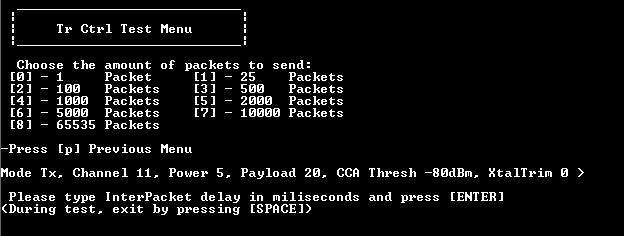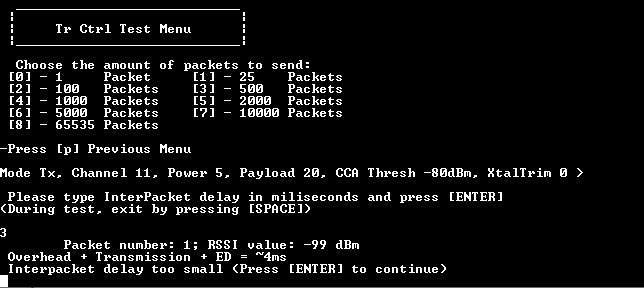Transmission Control test
The Transmission Control test performs data transmissions over the air using user-specified options.
The data payload is composed from a predefined data buffer that copies as many bytes as the ‘device state payload data length setting’ indicates.
Before any transmission, the test performs an energy detect procedure to obtain the RSSI value of the specified channel. This value is displayed on the side of a message that indicates a message has been sent over the air.
Steps to perform a Transmission Control Test
The figure below illustrates the Transmission Control Test menu.
Transmission Control Test menu

The process to conduct the Transmission Control Test is as follows:
Select the number of packets to be sent.
Specify the inter-packet delay. (Transmission delay between two consecutive packets).
The figure shows this process.
Transmission Control Test execution

This test also calculates an approximation of time needed to perform the Overhead + Transmission + Energy Detect procedure.
If the inter-packet delay has a value lower than the estimation previously calculated, a corresponding message is shown, and the test finishes the execution as shown in the figure below.
Transmission Control Test – Inter-Packet delay error

Parent topic:Transmission Control test
Parent topic:Carrier Sense and Transmission Control Select menu